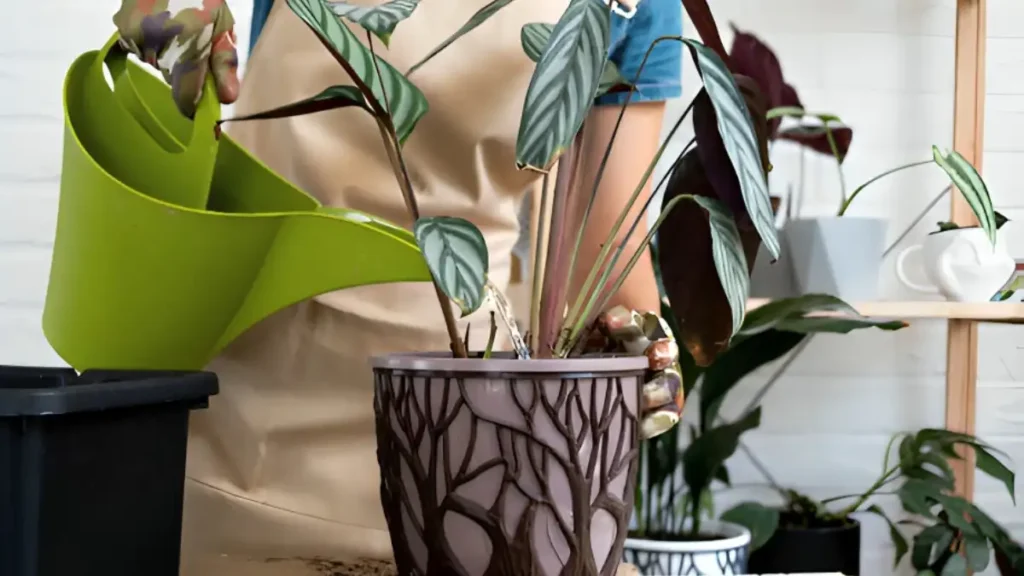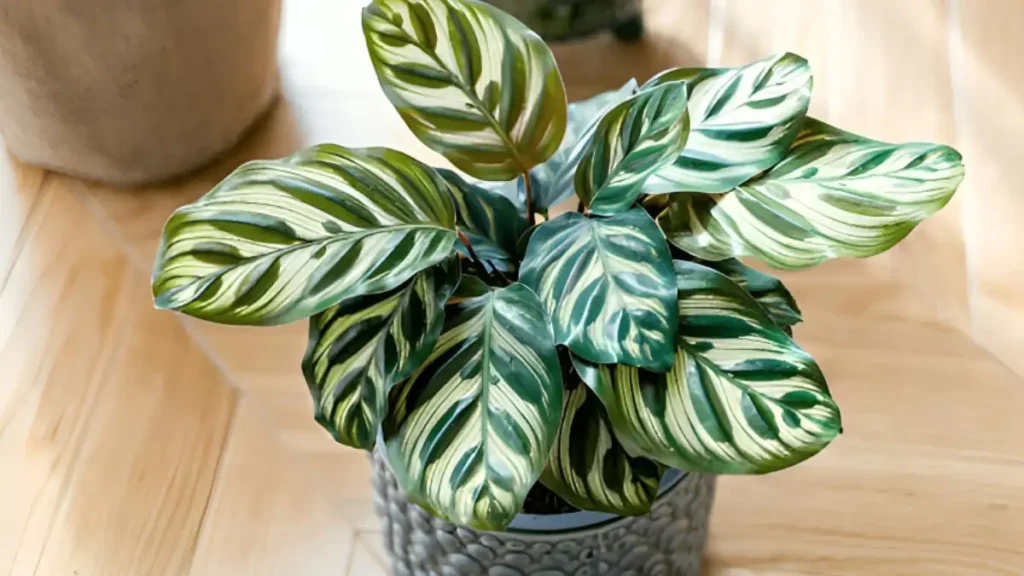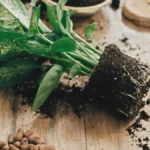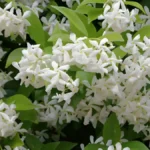A glance at a zebra plant’s striking white stripes will explain how it gained its name. Aphelandra squarrosa, also known as the Indoor Zebra Plant, is a beautiful tropical plant with a spot among the most beloved houseplants indoors. Its striking white stripes contrasted with vivid green leaves create a visually arresting focal point for any house. These natives of South America have stunning yellow flower spikes that endure for weeks while they bloom. The Zebra Plant, which is native to Brazil’s jungles, grows well indoors and infuses your home with a hint of the exotic splendor of nature. We’ll review everything you need to know in this post to take good care of this unusual plant and maintain its health, vibrancy, and blooming in your house.
Knowing the Zebra plant’s unique appearance:
The Zebra Plant receives its name from its striking, glossy leaves, which have bright white veins that resemble zebra stripes. This stunning contrast of deep green and white gives it a beautiful yet bold appearance that will complement a variety of home decor. The plant normally grows to be 12 to 24 inches tall, making it suitable for tabletops, shelves, and plant stands.
The Zebra Plant, known for its beautiful yellow spike and attractive foliage, is popular among houseplant lovers who appreciate both blooming and non-blooming variants.
The perfect environment for your indoor zebra plant to grow:
To ensure the health of your zebra plant, create an ideal atmosphere and meet its specific requirements for optimal growth. Let’s examine the requirements you must meet in more detail:
1. Light requirements
- Bright indirect light is ideal for the zebra plant’s growth. Its leaves can become scorched by too much direct sunshine, losing their bright beauty. Conversely, a lack of light can cause slower growth and less vibrant leaf color. The best location for the plant is close to a window that faces north or east so it can get lots of light without being in direct sunlight.
2. Zebra plant growing locations
- Zebra plants can be grown outdoors in gardens or containers in warmer climates like Florida and Southern California, but they should be maintained indoors in the majority of the United States. Since they are tropical plants, they thrive in areas with somewhat higher humidity than the rest of the house, such as kitchens, bathrooms, and sunrooms (placed out of direct sunlight).
3. Temperature and humidity
- Zebra plants thrive in warm, tropical weather between 65°F and 75°F, but should not be placed near windows or doors during winter. They thrive in humid environments and can be raised to 60% humidity by spraying or keeping a humidifier nearby.
4. Guidelines for watering your zebra plant
- The Zebra Plant requires moist soil but not excessively, as overwatering can cause root rot. Water when the soil feels dry, and less in fall and winter, but more during spring and summer. Ensure adequate drainage to prevent water accumulation at the bottom and prevent water accumulation at the bottom.

Find out how to care for a zebra plant:
1. Selecting the proper pot and soil for zebra plants
- The zebra plant thrives in well-draining, organically rich soil, requiring a premium tropical potting mix or a blend of sand, peat, and perlite for optimal root conditions.
- Choose a pot with drainage holes for optimal moisture management, promoting airflow and evaporation, thereby preventing overwatering and maintaining healthy roots.
2. How to fertilize your zebra plant for best results
- Due to the leaching of nutrients from soils, most potted plants (even zebra plants) require fertilizer. When your plants are actively growing and flowering, fertilize them once a month with a general-purpose, water-soluble fertilizer. Apply a balanced liquid fertilizer every two weeks from spring through summer, when the growing season is at its busiest. Avoid overfertilizing since this can harm the roots of the plant and lead to a buildup of salt in the soil.
3. Pruning and repotting the zebra plant
- The zebra plant can be maintained healthily with occasional trimming, removing dead leaves, and trimming spent flower spikes after flowering to prevent pest or disease issues.
- Repotting a plant every 1 to 2 years is essential for its growth and health. Use a fresh potting mix and a larger pot to ensure the plant has all its nutrients.
4. Typical pests and ways to avoid them
- Zebra plants can be affected by pests like aphids, scales, and mealybugs. To treat them, use organic pesticides like neem oil or insecticidal soap, and manually remove scale insects from leaves.
Zebra plant propagation:
Owning a zebra plant is a pleasure, and propagating it efficiently using stem cuttings is a great way to spread its beauty. Here’s how to accomplish it:
How to propagate zebra plant step by step
- Cut a 4- to 6-inch piece of stem right below a node with a clean, sharp pair of scissors.
- Just a few leaves remain at the top once the lower leaves are removed.
- To promote quicker root growth, dip the cut end into a rooting hormone.
- The cutting should be planted in a small pot with a moist potting mix.
- Put the pot in bright, indirect light and cover it with a plastic bag to produce a humid environment.

Conclusion:
The Indoor Zebra Plant is a stunning indoor plant with striped leaves and easy-care requirements. It adds tropical flair to any house and can be enjoyed for years with proper light, humidity, and care, providing beauty and success.
Certainly! If you’d like to learn more, please consider following our WhatsApp Channel: Harvest Gardening
A frequently asked questions:
Q1: What are the main benefits of a zebra plant?
A1: The zebra plant (Aphelandra squarrosa) is most known for its stunning foliage and vivid yellow blooms, which make it an outstanding ornamental interior plant.
Q2: Why is my Zebra Plant dying?
A2: Your Zebra Plant may be dying as a result of overwatering, inadequate drainage, or insufficient light. Make sure the soil is well-drained, minimize wet conditions, and provide bright, indirect light.



